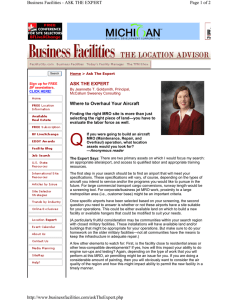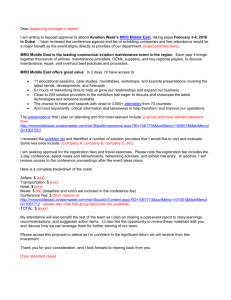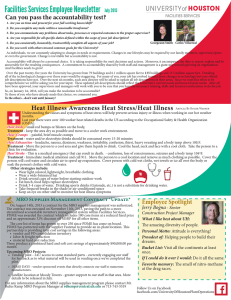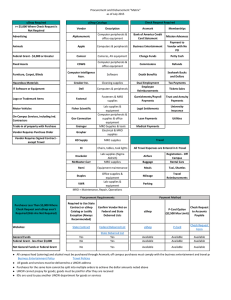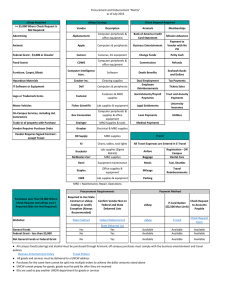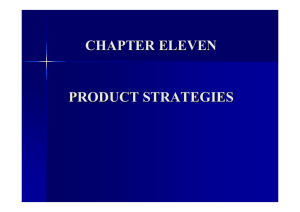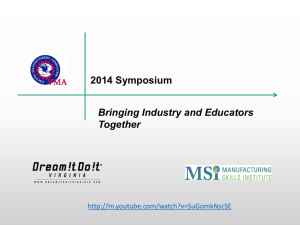MRO Practices and their Link to Improved Competitive Performance
advertisement
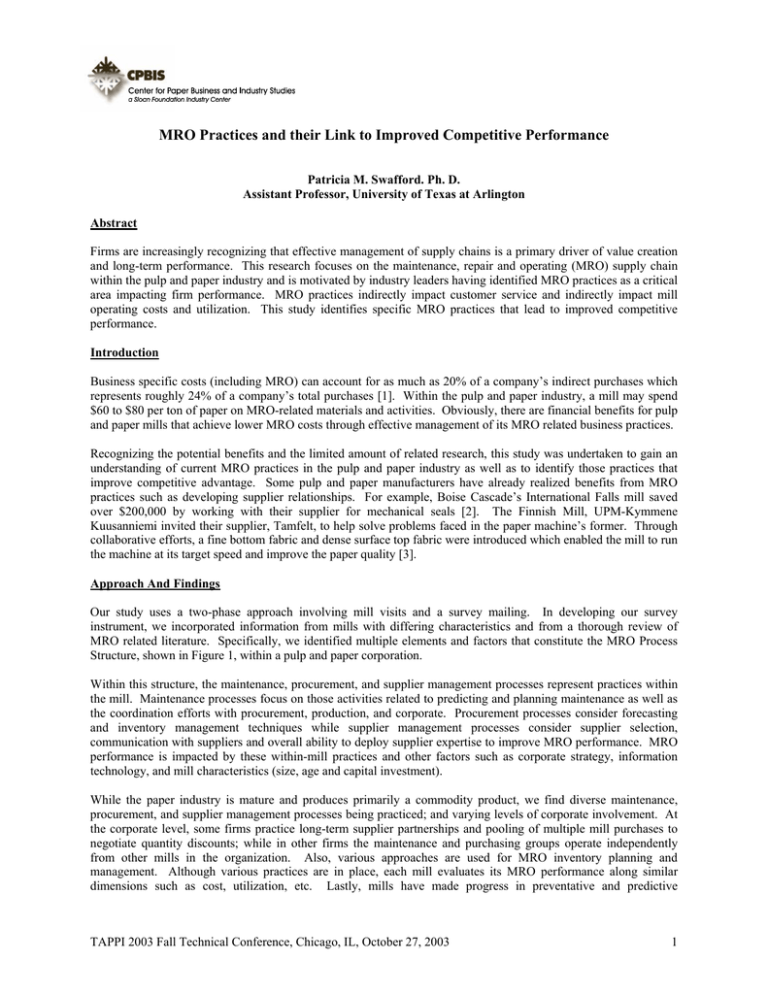
MRO Practices and their Link to Improved Competitive Performance Patricia M. Swafford. Ph. D. Assistant Professor, University of Texas at Arlington Abstract Firms are increasingly recognizing that effective management of supply chains is a primary driver of value creation and long-term performance. This research focuses on the maintenance, repair and operating (MRO) supply chain within the pulp and paper industry and is motivated by industry leaders having identified MRO practices as a critical area impacting firm performance. MRO practices indirectly impact customer service and indirectly impact mill operating costs and utilization. This study identifies specific MRO practices that lead to improved competitive performance. Introduction Business specific costs (including MRO) can account for as much as 20% of a company’s indirect purchases which represents roughly 24% of a company’s total purchases [1]. Within the pulp and paper industry, a mill may spend $60 to $80 per ton of paper on MRO-related materials and activities. Obviously, there are financial benefits for pulp and paper mills that achieve lower MRO costs through effective management of its MRO related business practices. Recognizing the potential benefits and the limited amount of related research, this study was undertaken to gain an understanding of current MRO practices in the pulp and paper industry as well as to identify those practices that improve competitive advantage. Some pulp and paper manufacturers have already realized benefits from MRO practices such as developing supplier relationships. For example, Boise Cascade’s International Falls mill saved over $200,000 by working with their supplier for mechanical seals [2]. The Finnish Mill, UPM-Kymmene Kuusanniemi invited their supplier, Tamfelt, to help solve problems faced in the paper machine’s former. Through collaborative efforts, a fine bottom fabric and dense surface top fabric were introduced which enabled the mill to run the machine at its target speed and improve the paper quality [3]. Approach And Findings Our study uses a two-phase approach involving mill visits and a survey mailing. In developing our survey instrument, we incorporated information from mills with differing characteristics and from a thorough review of MRO related literature. Specifically, we identified multiple elements and factors that constitute the MRO Process Structure, shown in Figure 1, within a pulp and paper corporation. Within this structure, the maintenance, procurement, and supplier management processes represent practices within the mill. Maintenance processes focus on those activities related to predicting and planning maintenance as well as the coordination efforts with procurement, production, and corporate. Procurement processes consider forecasting and inventory management techniques while supplier management processes consider supplier selection, communication with suppliers and overall ability to deploy supplier expertise to improve MRO performance. MRO performance is impacted by these within-mill practices and other factors such as corporate strategy, information technology, and mill characteristics (size, age and capital investment). While the paper industry is mature and produces primarily a commodity product, we find diverse maintenance, procurement, and supplier management processes being practiced; and varying levels of corporate involvement. At the corporate level, some firms practice long-term supplier partnerships and pooling of multiple mill purchases to negotiate quantity discounts; while in other firms the maintenance and purchasing groups operate independently from other mills in the organization. Also, various approaches are used for MRO inventory planning and management. Although various practices are in place, each mill evaluates its MRO performance along similar dimensions such as cost, utilization, etc. Lastly, mills have made progress in preventative and predictive TAPPI 2003 Fall Technical Conference, Chicago, IL, October 27, 2003 1 maintenance [4], however they have not adequately tapped into suppliers’ expertise to solve production problems. For example, there is insufficient use of available internet technologies to access information on purchase orders and deliveries. MRO Process Structure Maintenance Processes Corporate MRO Performance Information Technology Procurement Processes Control Variables (size, age, $) Supplier Management Processes Impactors Within Mill Figure 1: MRO Process Structure Currently, we are in phase two of this study that involves survey data collection. By collecting information from a broad range of pulp and paper companies, we will be able to statistically test relationships between certain MRO related practices and MRO performance. With mills currently having annual maintenance budgets in excess of $5 million [4], there is opportunity for reducing MRO costs by utilizing those practices that improve utilization, decrease unscheduled downtime, improve quality, and decrease costs along with other unlisted benefits. Conclusions This study makes significant contributions to MRO practices by providing a deeper understanding of current practices and by identify those practices that generate benefits such as improved MRO performance, increased productivity, and improved quality. As a result, the firms will also enjoy financial benefits and increased market share. Today’s hyper competitive pulp and paper industry mandates that firms understand and incorporate the best MRO related management practices that provide a competitive advantage. Acknowledgements The author thanks her colleagues with whom this study is being undertaken. Also, the entire research team extends its appreciation to the Center for Paper Business and Industry Studies, the Alfred P. Sloan Foundation and The Georgia Institute of Technology for their funding and support of this research. References 1. Kapoor, V. and Gupta, A., “Aggressive Sourcing: A Free-Market Approach”, Sloan Management Review, Fall, pp. 21-31(1997). TAPPI 2003 Fall Technical Conference, Chicago, IL, October 27, 2003 2 2. Williamson, M., “Mills partner with seal manufacturers to reduce process costs, achieve ROI”, Pulp and Paper, May edition, (1999). 3. Shaw, M., “Supplier/mill teamwork key in achieving quality and cost goals”, Pulp and Paper, March edition, (2000). 4. Kahn, J., Bevis, M., Hayes, M., O’Brien-Bills, R. and Rodrique, B., “Benchmarking maintenance practices at North American paper mills”, Solutions!, August, vol. 85(8), (2002). TAPPI 2003 Fall Technical Conference, Chicago, IL, October 27, 2003 3
